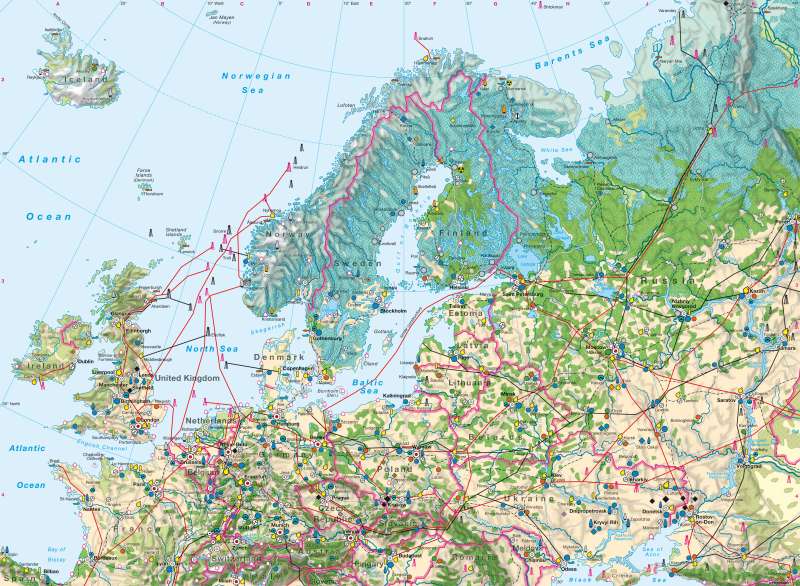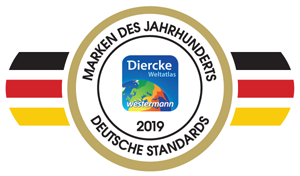Northern Europe — Economy
Northern Europe - Economy
978-3-14-100790-9 | Page 58 | Ill. 1

Information
The economic structure of Northern Europe is as complex and varied as the political orientations and economic legacies of the countries involved. The map illustrates the rough pattern of agricultural and forestry use, the most important centres for mining and raw material extraction, as well as the focal points of various sectors of industry. The major connections, such as roads and railways as well as oil and gas pipelines, indicate linkages, dependencies and gaps in provision. Regions that are significant for tourism, as well as important service centres, can also be identified.Coal, Oil and Natural Gas
Europe has a range of old industrialized regions, whose economic strength was based on coal extraction. This applies in particular to the coalfields in England, the Ruhr Area in Germany, Upper Silesia in Poland, and the Region around Donetsk and Rostov in the Ukraine and Russia. The most important lignite reserves in the area are to be found in Germany west of Cologne, in the north-west of the Czech Republic and in the south-west of Poland.
The exploitation of oil and natural gas in Northern Europe is a comparative new activity. The highest yields are obtained in the North Sea, with Great Britain and Norway holding the largest shares. Its rapid development can be seen from the example of Norway's production history, measured in million cubic metres of oil equivalent: This began with oil in 1971 with a figure of 0.4, exceeded the one hundred mark for the first time in 1991 with 108.5, and reached its zenith in 2001 with 180.9. In 2008 the figure was still as much as 122.7. Parallel to this, natural gas extraction rose from 2.7 (1977) to 99.2 (2008).
In Great Britain, the declining volume of extraction from the North Sea can be seen. Following its start in 1975, the volume of production raced upwards. In 2004 it was still as much as 86.8 million tons, but in 2008 it was only 64.1 million tons.
Russia's wealth of oil and natural gas is thanks to the deposits in Siberia, which are transported westwards through numerous pipelines and thus represent an important source of energy for various countries, for example the Ukraine.
Structure of Industry
The distribution of industrial sites indicates their dependence on a variety of locational factors. Heavy industry has traditionally been dependent on the availability of supplies of coal and raw materials. Thus, all the centres of the iron and steel industry are situated near to coal deposits or on waterways, which offer the preferred means of transport for bulk goods.
The chemical industry is dependent on the availability of its key raw material, oil. It has therefore tended to settle at port locations with refineries or along rivers, as can be seen from the example of the Rhine.
Services
Service industries, which long ago became an important contributor to economic performance, have different locational requirements than most other sectors of industry. The position of transport routes does not play a major role. The most significant service industry centres in Northern Europe are in the global cities of London and Paris. Of international significance are also Brussels, Zürich and Milan as well as Vienna, Warsaw and Moscow. Germany, with Berlin, Hamburg, Munich, Frankfurt and the Rhine-Ruhr region, has as many as five such high-ranking service industry locations.
D. Falk; Ü: J. Attfield




